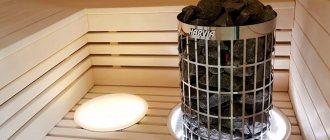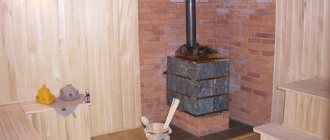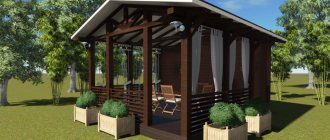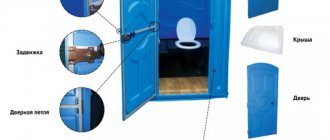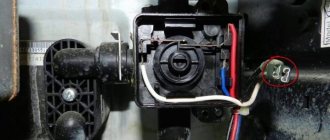This device, despite our brave space achievements, is still unknown to few people in our country. And for sure, only a few are interested in how to make a rocket stove with their own hands, because they do not understand the principle of its operation.
Photo 1 Rocket stove in the interior
This is a relatively new word in the domestic heating environment, coming from Germany. The key to unprecedented popularity in the homeland is a simple, cheap design coupled with high efficiency and the slightest absence of signs of soot. Considering that making your own equipment is not at all difficult, we will tell you how to do it, provide drawings, recommendations from specialists, videos and photos.
Design and principle of operation
The simplest rocket stove is a piece of large diameter pipe bent at a right angle. At the bottom there is a short horizontal section for storing fuel. At the beginning of combustion, the stove operates on the principle of a simple potbelly stove. But after heating the vertical part, which also serves as a chimney, combustion of the gases formed in the firebox begins.
Due to increased draft, air flow increases, which increases combustion intensity.
Despite its simple design, the furnace uses the most advanced methods of burning solid fuels:
- Direct combustion. Gases flow through the furnace channels without being stimulated by the draft created by the chimney.
- The gases released during the combustion of wood are burned in a vertical pipe, releasing heat. This phenomenon is called pyrolysis.
There are 2 types of structures:
- Simple . Consists of two pipes. The lower one is divided by a metal plate and serves as a blower. The top pipe makes up 2/3 of the entire length of the structure. In this option, the fuel is laid horizontally. A top-loading furnace has two tubes of different lengths, arranged vertically. The third connects them and serves as a fuel compartment. The simplest rocket stove is usually placed outdoors and is used for cooking food and boiling water.
- Improved . Design for indoor placement. Capable of heating a room up to 50 sq./m. Consists of two housings, one of which is installed externally. The combustion pipe is covered with heat-insulating material, the top one is hermetically sealed. To blow air into the furnace, an inlet hole is provided, or this function is performed by an open fuel compartment. The modernized chimney passes the heated gas flow through the furnace channels, promoting efficient combustion. As a result, the hob heats up and the heat is evenly distributed inside the room.
Advantages and disadvantages
The rocket stove has clear advantages:
- Simplicity of design. If you have the material and tools, you can easily and quickly build the device yourself.
- Use of all types of firewood, including low-quality (thin branches, chips) and damp.
- Not dependent on electricity, which is very important both for reasons of economy and when electricity has not yet been supplied to the site or is not available at all in the area where the device is used.
- Low fuel consumption combined with high efficiency.
- Expanded functionality.
- Complete combustion of fuel products, which eliminates the possibility of carbon monoxide poisoning when using such products indoors.
Design disadvantages include:
- The need for constant control of combustion and manual laying of firewood.
- High risk of burns from hot metal and carbon monoxide entering the room.
- Aesthetic unattractiveness of individual models.
Expert opinion
Levin Dmitry Konstantinovich
Some portable models with a large height and small support area are not stable, so they often tip over, for example, under the influence of gusts of wind.
DIY pyrolysis rocket stove made from cans
A camping wood chip burner will always come in handy, especially since it does not require special materials or skills. Even a teenager can make it. However, for those who first tackled the issue of heating with “rocket” stoves, this will be good practice, since the operating principle is identical:
- We take two tin cans of different diameters and heights (the difference is 20–25 mm).
- Cut a hole equal to the diameter of the smaller can in the bottom of the larger can.
- We make a network of holes in the bottom of the smaller jar.
- We make a belt of holes on the wall of the smaller can at 1/5 of its height from the open edge.
- We make a belt of holes on the wall of the larger can at 1/7 of the height of its open edge.
- We insert the smaller jar into the bottom of the larger one so that the bottom of the smaller one fits the open edge of the larger one. The burner is ready.
You probably already guessed that, in principle, this is a coaxial gas pipeline system. By adding various accessories to such a burner, you can increase the volume of the fuel compartment or boil water.
If you cut a hole in the wall of a larger container and install a fan, you will get nothing more than a turbocharged RP.
Using this “pocket” option, you can conduct experiments and comparative measurements - how the material burns by itself and how it burns using secondary air.
Application area
The rocket furnace is used in mobile and stationary versions.
In addition to cooking on the go, you can use it to:
- heating of residential premises;
- fruit drying;
- heating of greenhouses;
- ensuring positive temperatures in workshops, garages, utility rooms and warehouses.
The unit is especially popular among fishermen and hunters, car rally enthusiasts and survivalists. There is a special version, the purpose of which is indicated by the name itself - “Robinson”.
Review of ready-made models
The industry produces several types of rocket stoves. Each of them has design features and scope.
Vesuvius Rocket – Soyuz
Mobile design for floor installation. Suitable for cooking over an open fire. Convenient for use in country conditions. Model weight 12 kg. The design has a built-in stand that makes it stable. The firebox is open.
Vesuvius Rocket 1(2)
Hiking and tourist models in two sizes. The optimal choice for lovers of outdoor recreation. It consists of 3 compartments: a firebox, a blower and a vertical pipe with a hob in the upper part. It is economical and has high efficiency.
Kolundrov
Portable model for use in traveling conditions. Weight 4.75. It works for about 20 minutes on one load of fuel. Easy to assemble. Includes a firebox with a blower and damper, a pipe and a burner for placing dishes. The retractable bottom allows you to quickly get rid of ash and fuel residues.
Vesuvius Rocket 3
A model with an oven, which is suitable for heating cans of canned food and preparing baked potatoes. It has an L-shape, is fuel efficient and easy to transport. Weight 8 kg.
Flint Breadwinner
An easy-to-assemble portable model designed for cooking on the go. The fuel compartment is reliably protected from moisture. The upper stand is designed for dishes of various sizes (depending on the modification). In the Ognivo Baker model, you can bake food at the same time as cooking and boiling water.
Kuzma
Compact turbo oven with the ability to disassemble for easy transportation. Model weight – 3.5 kg. The firebox is protected from rain and wind. The unit can be used in snow. It is distinguished by the lightness and strength of its component parts, efficient and easy to use.
Self-made models
Craftsmen have developed several versions of rocket stoves for stationary and mobile use:
- portable units made of metal pipes, cans or buckets;
- jet heating devices from a gas cylinder;
- ovens built from fireclay bricks and metal containers;
- heating heat generators with a stove bench.
The most complex models are those whose construction requires the skills of a mason. But if there are serial layout schemes, even a novice home craftsman can handle this work.
From a gas cylinder
It is made from a gas cylinder or fuel barrel. Sections of thick-walled steel pipes and a loading compartment-box made of metal sheets are welded to the volumetric tank. The model is used for heating utility rooms.
Firewood burns thanks to the air flow through the loading window. Afterburning of gases occurs in a pipe installed inside the cylinder due to the supply of secondary air. Insulation allows you to raise the temperature inside the oven to 1000 degrees.
Hot gases hit the bell as they move and enter the outer chamber, the walls of which serve as a heat exchanger. Having given off energy, the combustion products are discharged through a chimney cut into the lower part on the back side of the cylinder.
To create the draft necessary for stable operation of the stove, the top of the chimney is raised at least 4 meters relative to the loading compartment.
With convector
Design similar to portable options. To increase heat transfer, vertical tubes are mounted on the outer casing, performing a function similar to the air channels of the Buleryan pyrolysis furnace. Cold air is trapped at the bottom of the tube heat exchangers and is heated as it moves upward. This ensures forced convection, which increases the thermal efficiency of the installation.
Made from brick and metal barrel
Stationary model for heating residential premises. The internal design is reminiscent of the previous model from a gas cylinder or barrel. Using brick to build a firebox allows you to accumulate heat and release it over several hours.
With a bed
A simple Raketa stove has the disadvantage that most of the heat is lost through the chimney. Despite this, certain advantages of its design make it easy to get rid of this disadvantage.
The thing is that the unit was called reactive for a reason, but because of the high rate of excision of burning gases. This feature can be turned into a benefit by significantly increasing the length of the smoke exhaust channels.
This idea found its implementation in massive structures with a couch in the shape of a sofa or bed. Such a rocket stove is made of brick or rubble stone, decorated with a plastic mass of clay and sawdust. Thanks to the high heat capacity of the materials used, the stove can retain heat all night, which, combined with high efficiency, makes the heating unit very attractive for installation in residential premises.
Shirokov-Khramtsov furnace
This Russian modification is an improved version of the classic scheme. The main components of the model oven are made from an expensive type of concrete that is resistant to high temperatures.
Accurate calculation significantly improved the stability of performance indicators, which made it possible to place heat-resistant glass in the bunker area to partially release infrared radiation towards the room. An improvised fireplace heats the room and serves as an effective decorative element.
“Bubafonya” or piston PDG
This oven received its original name from the nickname of the author, who first posted the diagram in the public domain. Whether he is the inventor of this variety is unknown. Most likely, in one form or another it has existed since ancient times, since its action is based only on the laws of physics and nature.
The peculiarity of this version of the PDG is the constant pressure of the piston, the heel of which balances and maintains a constant uniform temperature, not allowing individual areas to cool down or overheat.
Design
“Bubafonya” is something like a piston internal combustion engine cylinder in an extremely primitive form:
- Element 1. Combustion chamber (CC). An open cylindrical container (barrel, cylinder, pipe) without hatches and with a smoke exhaust at the upper boundary. The size of the KS can vary from 20 to 240 liters.
- Element 2. Piston. Steel pipe with a cross-section of 75 mm with a round heel at one end. The heel has a diameter 40–50 mm smaller than the KS, and a hole for the diameter of the pipe. In the outer part, the heel has ribs to allow air to enter the combustion area. Functionally, this part plays the role of an air duct and a press.
- Element 3. Cover. A simple steel cover with a hole for the duct pipe.
The simplicity and reliability of the design, as well as the availability of the material, made this stove the most popular among villagers and garage owners. “Bubafonya” is the record holder for the longest burning time - a combustion chamber from a 200 liter barrel with a full, dense vertical load works for 20–24 hours.
How to assemble
1. Cut off the top lid of the barrel (it must not be rotten). It can then be used under the oven lid. If it is a gas cylinder, we cut it along the junction of the head and the wall. We cut out a chimney hole 20–30 mm from the top edge and weld a channel from a 100–120 mm pipe.
2. Air duct (VD). For a compressor chamber of any size, the sufficient internal diameter of the explosive pipe is 75 mm. The length of the explosive is equal to the height of the KS plus 200–300 mm.
3. Heel. We cut out a sheet of 4–6 mm in the form of a circle with a diameter smaller than the combustion chamber by 30–40 mm.
4. Cut a hole in the center of the heel equal to the internal diameter of the explosive plus 2–3 mm. A strip edge can be welded along the edge to stabilize the piston when the firebox is loaded.
5. We weld 30x30 or 40x40 corners in the form of rays from the center onto the working surface of the heel.
6. We weld the explosive to the heel at an angle of strictly 90º on the reverse side of the ribs.
7. Weld an M6 nut on the free end of the explosive from the inside. We cut the damper along the explosive section and install it on the screw. You can use a magnet of a suitable diameter. This damper regulates the air supply to the combustion chamber.
8. We weld a strip of 20–30 mm in circumference onto the lid, like a side.
The fuel for a long-burning piston stove of the “Bubafonya” type can be any solid combustible material, but, as a rule, it is firewood. A small amount of rubber or plastic will not give a “black exhaust”, because it will completely burn out in the combustion chamber. Fuel is loaded with the piston removed, but as work progresses, the stove can be reloaded with small firewood through the explosive pipe. Safe ignition can also be done via explosives.
A problem that doesn't exist
A meticulous craftsman will try to fit the explosive under the lid, and the lid under the CS as tightly as possible and even provide seals. It was experimentally found that such “improvements” result in the inability of the furnace to work productively. The secret lies in the secondary air, which is pumped through the gaps in the upper part and provides traction. In this case, the slots act as injectors, which we described in the previous article.
Making the most of it
Convector. To remove heat from the combustion chamber (furnace), there is a simple and effective solution based on air convection.
Convection is a type of heat transfer in which thermal energy is transferred in streams or jets.
To construct a primitive convector, we will need a profiled galvanized sheet with medium wave, which we simply need to wrap around the combustion chamber. The profile waves will serve as channels through which air will flow. Heated from the stove, it will rush upward, and its place will be taken by cold air coming from the bottom of the channel. If there is no profiled sheet, you can fasten CD or UD profile trim around the firebox and chimney.
Casing. Another type of convector can be a primitive coaxial system.
Coaxial - from the Latin co - joint and axis - axis, i.e. having a common axis.
To do this, we weld brackets 40–50 mm long onto the combustion chamber, spaced 50 mm from the top and bottom. We fix a sheet of metal on them. The thickness is not critical here, since the coolant is air, and the casing itself will not heat up. Thin galvanized steel, which can be made removable, is suitable.
Criteria for choosing a homemade stove
When choosing a jet stove model for manufacturing at home, you need to take into account the features of its operation:
- As a camping option, choose a mobile unit, which will be enough to warm up, dry clothes and cook lunch.
- To heat small technical rooms, a more massive structure made from a gas cylinder is used.
- If you need to heat a small country house, there is no better option than a heating unit lined with brick or a model with a stove bench.
How to heat?
Taking into account the long path of the smoke removal system in a stationary structure, it is necessary to start the operating mode after preheating. When working with rocket stoves, this rule does not need to be followed. But a large oven is first heated with dry shavings, paper, and other suitable consumables. For loading, use a blower with the door open.
The degree of readiness is assessed by noise reduction. At this stage, the usual loading of fuel into the appropriate part of the furnace is carried out.
What kind of rocket stove would you install in your dacha?
PurchasedHomemade
To adjust the operating mode, use the displacement of the main hopper cover and the adjustment of the blower door. If there is a lot of oxygen, combustion is activated while simultaneously blocking the pyrolysis process. Under such conditions, fuel consumption indicators deteriorate and carbon deposits form in the riser.
It should be emphasized that it is difficult to clean a closed central channel. In the worst situation, its throughput is reduced to critically low values.
Features of use
To use the rocket stove effectively and safely, the following principles should be adhered to:
- Before adding fuel, the device must be warmed up. This is especially important for large ovens. When cold, they will spend the accumulated thermal energy to heat the body.
- For heating, shavings, dried paper or straw are placed in the ash pit. The optimal temperature is determined by the hum that appears. The prepared stove is filled with fuel, which is ignited by the accelerating material.
- Until the hum reappears after adding the main fuel composition, the blower is left completely open. Subsequently, combustion is regulated by closing and opening the door based on the noise from the stove. The sound should be weak, but not completely silent.
- Larger stoves require a smaller inlet. It is better to use autonomous blower in such units.
- The power of the device is adjusted by changing the volume of fuel, and not by the amount of incoming air.
- In homemade devices, you need to provide a hopper with a sealed lid, otherwise some of the energy will be wasted.
- The rocket stove is not suitable for heating a bathhouse. It does not generate enough IR radiation to warm the room.
A properly assembled stove is compatible with any type of solid fuel (coal, wood and residues from its processing, cones, corn stalks, chipboard).
The rocket stove has a simple structure and increased performance, making it an excellent addition for outdoor recreation, work in the garage, or in the country. The unit consumes few resources, warms up well and quickly. A variety of models allows you to choose the best option for specific purposes of use.
FAQ
Can Rocket be used in a greenhouse?
Yes. A rocket stove is suitable for heating a greenhouse. The chimney pipe is buried in the ground. Other models are not capable of working in such conditions. For this stove, it is enough to have a small difference between the firebox (air inlet) and the end of the chimney. And there is no need for forced air supply at all.
How often should the rocket furnace firebox be cleaned of soot?
The main part of combustion products evaporates independently through the chimney pipe. You need to remove ashes from the firebox every 15–20 days.
A rocket stove is an opportunity to quickly heat a small room and cook food using a minimum amount of fuel
Types of products
The units differ in construction material:
- Metal - usually constructed from barrels, fire extinguishers, pipes, gas cylinders, sheet steel. The prevalence and availability of components makes it possible to manufacture a reliable and productive device.
- Clay-brick - Fireclay clay and brickwork have a high heat capacity, absorb heat well and warm up the room. When burning in such devices, the temperature increases to 1000 degrees. This material is also simple and easy to maintain.
- Based on improvised means - the simplest versions of rocket stoves are assembled from all sorts of available and cheap containers - steel buckets, cans. They are well suited for field use.
